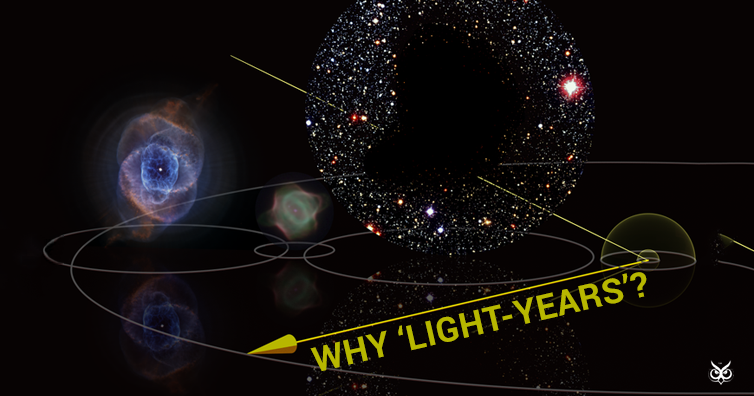You’ve probably heard the term ‘light-year” a million times by now and if you’ve been paying attention in school you know that it’s a unit of measurement used by astronomers to calculate distances in space (not time). But what exactly is a “light-year” compared to our known miles or kilometers? And why do astronomers use this indeed weird measurement unit?
Well, because we all love this kind of information, here you go:
A light-year used by astronomers when measuring distances in space is, as its name implies, the distance a beam of light travels in one year. Compared to our known units of linear measurements, a light year equals six trillion miles (10 trillion kilometers). So why do scientists do things this way? Why not just use miles or kilometers? (the article continues after the ad)
For two reasons actually. First of all, it’s because the distances in space are immersive. For example, our nearest star called Proxima Centauri is 24,000,000,000,000 miles away (yes, that’s the distance to our nearest star). So you can easily understand that if we go beyond that, we can quickly run into insanely unwieldy numbers. However, by using a bigger measuring unit, numbers become manageable – Proxima Centauri is just 4 light years away.
Secondly, it’s convenient as light travels throughout space at exactly the same speed: approximately 670 million miles (1,110 million kilomerers) per hour. We don’t usually think of light travelling speed because we all assume that it’s instantaneous – you flick the switch and the light is on, right? Well, yeah, but it’s not actually instantaneous, it’s just extremely fast. In fact, travelling at that speed you would encircle the Earth eight times, get to the moon in one and a half seconds and teach the sun in eight minutes (yes, it takes eight minutes for the sun’s light to hit the Earth so we are actually looking into the past – how the sun was 8 minutes ago).
If you take that to a greater scale though, things change: the light from a star located at one end of our galaxy takes 100,000 light-years to reach the other end. Hence, it immediately becomes apparent how convenient this unit of measurement is for astronomers to calculate these enormous, out-of-this-world (see what i did there?) distances in space.
And now you know!
If you like what you read, then you will definitely love this one: Why Some Countries Refrigerate Their Eggs While Others Don’t?
Photo: Wikimedia
Photoshop: I’m A Useless Info Junkie
Sources: What is a light-year and how is it used? | What is a light-year? | What Is a Light-Year?

